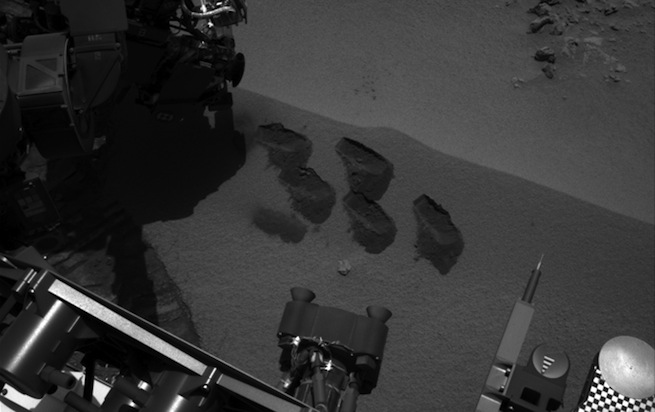Thanks to NASA’s Curiosity rover, scientists have been able to track wind and radiation patterns on Mars in an attempt to discover whether conditions there were ever favorable to life.
[aditude-amp id="flyingcarpet" targeting='{"env":"staging","page_type":"article","post_id":575894,"post_type":"story","post_chan":"none","tags":null,"ai":false,"category":"none","all_categories":"business,","session":"D"}']Initial readings found that levels of radiation are about the same as those astronauts typically experience in the low-Earth orbit. “Absolutely, astronauts can live in this environment,” Don Hassler of the Southwest Research Institute in Boulder, Colo., said during a news conference Thursday.
Hassler explained that Mars’ natural environment acts as a shield for the radiation on the surface. This supports the notion that astronauts can set foot and even function on the Red Planet for a short stretches of time.
AI Weekly
The must-read newsletter for AI and Big Data industry written by Khari Johnson, Kyle Wiggers, and Seth Colaner.
Included with VentureBeat Insider and VentureBeat VIP memberships.
Curiosity’s fancy instrument, the Radiation Assessment Detector (RAD), monitors high-energy radiation in the environment; this could also be a factor in determining whether Mars has the potential to host lifeforms.
Researchers believe that Mars lost its global magnetic field long ago due to solar wind bombardment. RAD reported that as the remaining Martian atmosphere thickens and thins daily, radiation levels rise and fall by 3 percent to 5 percent.
As was first reported in a NASA blog post, researchers stationed in a car-sized mobile lab are specifically tracking events with a least one characteristic of a whirlwind. They are also linking the rhythmic changes in radiation to daily atmospheric changes, which will lead to a better understanding the native environment.
The overarching goal of the mission is to use assess whether areas inside Gale Crater, an area of Mars where Curiosity landed, once offered a habitable environment for microbes.
Image credit: NASA/JPL-Caltech
VentureBeat's mission is to be a digital town square for technical decision-makers to gain knowledge about transformative enterprise technology and transact. Learn More

